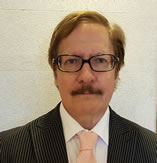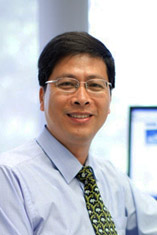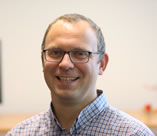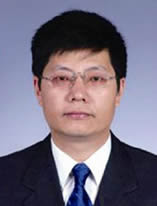1. The U.S. Food and Drug Administration’s Database of Medical Device Adverse Events

Michael Pecht
Professor of the University of Maryland
Founder and Director of CALCE
Editor-in-chief of IEEE Access
Chief Editor of the IEEE Transactions on Reliability
Chief Editor for Microelectronics Reliability
Bio: Professor Michael Pecht is a world renowned expert in strategic planning, design, test, and risk assessment of electronics and information systems. Prof Pecht has a BS in Physics, an MS in Electrical Engineering and an MS and PhD in Engineering Mechanics from the University of Wisconsin at Madison. He is a Professional Engineer, an IEEE Fellow, an ASME Fellow, an SAE Fellow. He is the editor-in-chief of IEEE Access, and served as chief editor of the IEEE Transactions on Reliability for nine years, and chief editor for Microelectronics Reliability for sixteen years. He has also served on three U.S. National Academy of Science studies, two US Congressional investigations in automotive safety, and as an expert to the U.S. Food and Drug Administration (FDA). He is the founder and Director of CALCE (Center for Advanced Life Cycle Engineering) at the University of Maryland, which is funded by over 150 of the world’s leading companies at more than US$6M/year. The CALCE Center received the NSF Innovation Award in 2009 and the National Defense Industries Association Award. Prof Pecht is currently a Professor in Applied Mathematics, Statistics and Scientific Computation at the University of Maryland, as well as a Chair Professor in Mechanical Engineering. He has written over 500 technical articles and has 8 patents. In 2008, he was awarded the highest reliability honor, the IEEE Reliability Society’s Lifetime Achievement Award. In 2010, he received the IEEE Exceptional Technical Achievement Award for his innovations in the area of prognostics and systems health management.
2. Role of mHealth in Universal Health Coverage (UHC)

Pradeep Ray
Shanghai 1000 Talent Distinguished Professor, University of Michigan Joint Institute, Shanghai Jiao Tong University, China
Honorary Professor and Founder, WHO Collaborating Centre on eHealth, UNSW -Australia
Professor, MoE Engineering Research Centre for Digital Medicine, Shanghai Jiao Tong University
Visiting Professor, Hiroshima University, Japan
Bio: Professor Pradeep Ray has recently been awarded the Shanghai 1000-talent Distinguished Professor status to work on the role of entrepreneurship in mHealth for addressing global problems. He is also a Professor in the Engineering Research Centre for Digital Medicine at Med-X Institute of Shanghai Jiao Tong University. He has been founder of the WHO Collaborating Centre on eHealth at the University of New South Wales (UNSW)-Australia where he is an Honorary Professor in the School of Public Health and Community Medicine (SPHCM). Pradeep led to completion (2006-2009) the WHO Research on the Assessment of e-Health for Health Care Delivery (eHCD) involving a number of countries in the Asia-Pacific region (India, China, Vietnam and Philippines). Pradeep also led to completion a number of international initiatives, such as the ITU-D/IEEE Mobile eHealth Initiative for Developing Countries (2004-2009) and the Global Longitudinal Study on the Assessment of mHealth (2009-2012). This study involved a number of developing countries, such as Bangladesh, India, PNG and Indonesia. The highly cited work by APuHC on mHealth Bangladesh led to the formation of the UNSW YunusSocial Business Hub for Health, the first of its kind in Australia. He has been an IEEE Distinguished Lecturer on eHealth (since 2014). He has been a founder and a Chair of IEEE eHealth Technical Committee (2009-2013) and the founder of IEEE Healthcom (since 1999).
3. Robust Surgical Endoscope Tracking and Navigation

Sean He
Professor of Computer Science
School of Electrical and Data Engineering
Core Member, Global Big Data Technologies Centre
Core Member, AAI - Advanced Analytics Institute
Bio: Professor Sean He, as a Chief Investigator, has received various research grants including four national Research Grants awarded by Australian Research Council (ARC). He is the Director of Computer Vision and Pattern Recognition Laboratory at the Global Big Data Technologies Centre (GBDTC). He is also the Director of UTS-NPU International Joint Laboratory on Digital Media and Intelligent Networks. He is an IEEE Senior Member and has been an IEEE Signal Processing Society Student Committee. He is a leading researcher in several research areas including big-learning based human behaviors recognition on a single image, image processing based on hexagonal structure, authorship identification of a document and a document’s components (e.g., sentences, sections etc.), network intrusion detection using computer vision techniques, car license plate recognition of high speed moving vehicles with changeable and complex background, and video tracking with motion blur. He has played various chair roles in many international conferences such as ACM MM, MMM, IEEE BigDataSE, IEEE CIT, IEEE AVSS, IEEE TrustCom, IEEE ICPR and IEEE ICARCV. In recent years, he has many high quality publications in IEEE Transactions journals such as IEEE Transactions on Computers, IEEE Transactions on Parallel and Distributed Systems, and IEEE Transactions on Multimedia; and in Elsevier’s journals such as Pattern Recognition, Signal Processing, and Computer Networks. He has also had papers published in premier international conferences and workshops such as ACL, IJCAI, CVPR, ECCV and ACM MM. He has recently been a guest editor for various international journals such as Journal of Computer Networks and Computer Applications (Elsevier), Future Generation Computer Systems (Elsevier) and Signal Processing (Elsevier). He is currently an Advisor of HKIE Transactions.
4. Cyber Security Threats to Citizen's Health and Wellbeing

Helge Janicke
Director of De Montfort University's Cyber Technology Institute
Head of School of Computer Science and Informatics
Bio: Professor Helge Janicke is the Director of De Montfort University's Cyber Technology Institute. He is the Head of School of Computer Science and Informatics. Prof. Janicke was awarded his PhD in Computer Science in 2007 and worked on Cyber Security with organisations such as Airbus Group, QinetiQ, Ministry of Defence and General Dynamics UK amongst others. His interests are covering formal verification techniques and their application to Cyber Security, SCADA and Industrial Control System Security as well as aspects of Cyber Warfare. He established DMU's Airbus Group Centre of Excellence in SCADA Cyber Security and Forensics Research in 2013. He is a general chair of the International Symposium on SCADA and Industrial Control Systems Cyber Security Research (ICS-CSR). He is Editor-in-Chief for the Journal of Security and Safety (EAI) and serves on the editorial board and as reviewer for a number of international journals.
5. Integrated Network Application in Telemedical Assistant System

Chengsheng Pan
Professor/doctoral supervisor of Dalian University
President of Dalian University of China
Bio: Professor Chengsheng Pan is long engaged in air ground integrated network management technology and aerospace information transmission network technology research. He has led and organized seven National “863” projects, one National “973” project of China. He has published over 100 papers in related conferences, journals, and books, and been authorized with 12 items of patents. He has been awarded two second prizes of National Scientific and Technological Progress, first prize of National Defense Science and Technology, first prize of Technology Invention in Liaoning Province, first prize of Scientific and Technological Progress, et al. He is the consultant of International Journal of Innovative Computing and Information & Control, serving as the part-time member of its Science and Technology Committee and standing director of the Chinese Society of Command and Control.